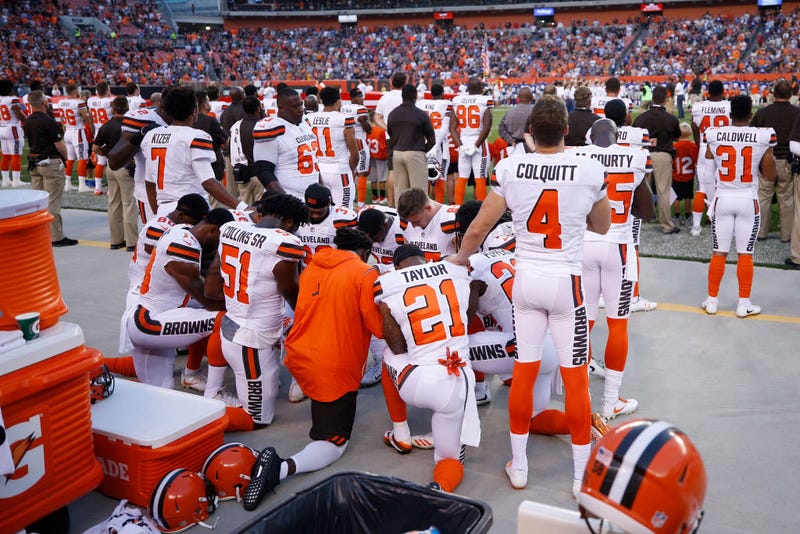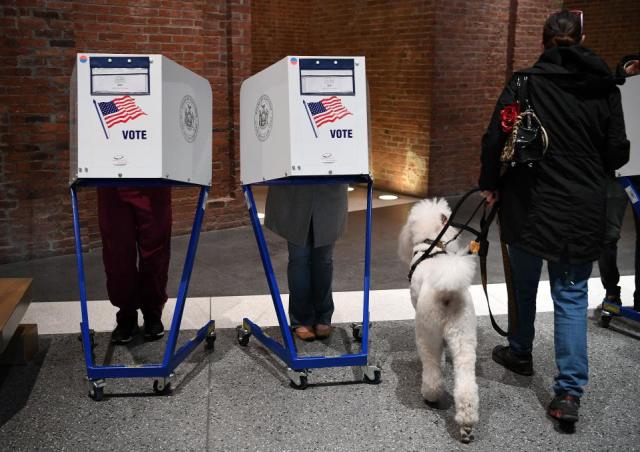The Guardian
Study: Katharine Hayhoe is successfully convincing doubtful evangelicals about climate change | Dana Nuccitelli
Dana Nuccitelli, The Guardian August 28, 2017
A new study finds that a lecture from evangelical climate scientist Katharine Hayhoe successfully educates evangelical college students, validating the “trusted sources” approach

Approximately one-quarter of Americans identify as evangelical Christians, and that group also tends to be more resistant to the reality of human-caused global warming. As a news paper by Brian Webb and Doug Hayhoe notes:
a 2008 study found that just 44% of evangelicals believed global warming to be caused mostly by human activities, compared to 64% of nonevangelicals (Smith and Leiserowitz, 2013) while, a 2011 survey found that only 27% of white evangelicals believed there to be a scientific consensus on climate change, compared to 40% of the American public (Public Religion Research Institute, 2011).
These findings appear to stem from two primary factors. First, evangelicals tend to be socially and politically conservative, and climate change is among the many issues that have become politically polarized in America. Second, there is sometimes a perceived conflict between science and religion, as Christians distrust what they perceive as scientists’ “moral agenda” on issues like evolution, stem cell research, and climate change. As Webb and Hayhoe describe it:
theological conservatism, scientific skepticism, political affiliation, and sociocultural influences have reinforced one another to instill climate skepticism into the evangelical tribe mentality, thus creating a formidable barrier to climate education efforts.
Evangelical climate leaders
There are also evangelicals who have tried to convince their peer group about the reality of human-caused climate change and our moral obligation to address it. These include the Evangelical Environmental Network, the Evangelical Climate Initiative, the Young Evangelicals for Climate Action, and evangelical climate scientists like Sir John Houghton and Doug Hayhoe’s daughter Katharine Hayhoe (one of TIME magazine’s 100 most influential people). However, a majority of evangelicals continue to reject the reality of human-caused climate change, and there hasn’t been research quantifying the effectiveness of these evangelical climate leadership efforts.
Brian Webb and Doug Hayhoe’s study did just that by testing the effectiveness of a climate lecture delivered by Katharine Hayhoe to undergraduate students at the predominantly evangelical Houghton College in New York. Approximately half of the participants self-identified as conservatives and Republicans, 28% as liberals and Democrats, and the remainder as neither liberal nor conservative. 63% of the participants identified as evangelicals (most of the rest were of other Christian denominations).
Katharine Hayhoe’s lecture presented climate science information through the lens of an evangelical tradition. In addition to presenting scientific evidence, it included an introduction about the difference between faith and science (faith is based on things that are spiritually discerned, whereas science is based on observation). About six minutes of the 33- to 53-minute lectures were devoted to theology-based ethics.
Hayhoe lecture’s effectiveness
The participants filled out a survey before and after the lecture, detailing their acceptance that global warming is happening, its cause, whether there’s a scientific consensus, how high of a priority they consider it, how worried they are about it, and how much it will harm various groups. The results showed an increase in pro-climate beliefs for every single question after listening to Katharine Hayhoe’s lecture.
Acceptance that global warming is happening increased for 48% of participants, and that humans are causing it for 39%. Awareness of the expert scientific consensus increased among 27% of participants. 52% were more worried about climate change after watching the lecture, and 67% increased their responses about how much harm climate change will do. 55% of participants viewed addressing climate change a higher priority after attending Katharine Hayhoe’s lecture. For most of the remaining participants, there was no change in responses to these questions.
By testing three different lecture approaches, Webb and Hayhoe also concluded that the lecture was equally effective when presented in person or as a recorded video, and that adding material about common climate misconceptions didn’t make the lecture any more effective.
Facts matter – especially when they come from trusted sources
There’s been some debate among social scientists about how much facts matter in today’s politically polarized society. Some have warned about the “smart idiots” effect, in which people who are more knowledgeable are often less persuadable, essentially because they have more tools with which to reject information they find inconvenient. However, other research has shown that climate-specific knowledge does increase peoples’ acceptance of human-caused global warming. The question then becomes how to arm people with that climate-specific knowledge.
One thing most social scientists agree on is that people are more open to information when it comes from “trusted sources” – people with whom they have shared values. For evangelicals, Katharine Hayhoe is a perfect example, and this study confirms that her lectures are effective at informing evangelical college students about climate change.
Other climate scientists can follow Hayhoe’s successful example by identifying groups whose membership is predominantly skeptical about human-caused global warming, with whom the individual scientist shares a commonality that will make him or her a trusted source of information. This could consist of religious beliefs, political leanings, or other shared values. This study has shown that the trusted source approach is an effective one at breaking through individuals’ resistance to the realities of human-caused climate change.

 Lyle Hadden, a soybean farmer, walks through a field he’s planted that shows signs of being affected by the herbicide dicamba. (Andrea Morales/For The Washington Post)
Lyle Hadden, a soybean farmer, walks through a field he’s planted that shows signs of being affected by the herbicide dicamba. (Andrea Morales/For The Washington Post)
 Eddie Dunigan, (center) a consultant from Craighead County, raises questions about the volatility of dicamba to Arkansas Gov. Asa Hutchinson (R) during the governor’s “Turnrow Tour” at the Adams Estate in Leachfield, Ark. (Andrea Morales/For The Washington Post)
Eddie Dunigan, (center) a consultant from Craighead County, raises questions about the volatility of dicamba to Arkansas Gov. Asa Hutchinson (R) during the governor’s “Turnrow Tour” at the Adams Estate in Leachfield, Ark. (Andrea Morales/For The Washington Post) Dr. Marty Matlock, Executive Director of the Office for Sustainability at the University of Arkansas, Ken Cook, President and Co-founder at Environmental Working Group, and Veronica Nigh, Economist at American Farm Bureau Federation, discuss how to manage risks in biotechnology, selective breeding and genetically modified crops and possible tools and resources farmers can use to solve longstanding issues. (Washington Post Live)
Dr. Marty Matlock, Executive Director of the Office for Sustainability at the University of Arkansas, Ken Cook, President and Co-founder at Environmental Working Group, and Veronica Nigh, Economist at American Farm Bureau Federation, discuss how to manage risks in biotechnology, selective breeding and genetically modified crops and possible tools and resources farmers can use to solve longstanding issues. (Washington Post Live) Pigweed, a highly competitive plant that grows in cotton and soybean fields and has developed resistance to some pesticides, grows tall over soybean fields weakened by nearby dicamba use. (Andrea Morales/For The Washington Post)
Pigweed, a highly competitive plant that grows in cotton and soybean fields and has developed resistance to some pesticides, grows tall over soybean fields weakened by nearby dicamba use. (Andrea Morales/For The Washington Post) Soybean farmer Brad Rose’s truck kicks up dust while heading down a road near his farm. (Andrea Morales/For The Washington Post)
Soybean farmer Brad Rose’s truck kicks up dust while heading down a road near his farm. (Andrea Morales/For The Washington Post) The National Museum of African American History and Culture is the first Smithsonian museum to have solar panels. Solar Solution
The National Museum of African American History and Culture is the first Smithsonian museum to have solar panels. Solar Solution Getty
Getty Getty
Getty Getty
Getty Erica Harris DeValve August 23, 2017
Erica Harris DeValve August 23, 2017 A group of Cleveland Browns players kneel in a circle in protest during the national anthem prior to a preseason game against the New York Giants at FirstEnergy Stadium in Cleveland on Aug. 21, 2017. (Joe Robbins/Getty Images)
A group of Cleveland Browns players kneel in a circle in protest during the national anthem prior to a preseason game against the New York Giants at FirstEnergy Stadium in Cleveland on Aug. 21, 2017. (Joe Robbins/Getty Images) Voters at the Brooklyn Museum polling station in the Brooklyn borough of New York City on November 8, 2016. ANGELA WEISS/AFP/Getty
Voters at the Brooklyn Museum polling station in the Brooklyn borough of New York City on November 8, 2016. ANGELA WEISS/AFP/Getty White nationalists, neo-Nazis and members of the “alt-right” with body armor and combat weapons evacuate comrades who were pepper-sprayed after the “Unite the Right” rally was declared an unlawful gathering by Virginia State Police August 12, in Charlottesville, Virginia. | Chip Somodevilla/Getty Images
White nationalists, neo-Nazis and members of the “alt-right” with body armor and combat weapons evacuate comrades who were pepper-sprayed after the “Unite the Right” rally was declared an unlawful gathering by Virginia State Police August 12, in Charlottesville, Virginia. | Chip Somodevilla/Getty Images Hammond Police say these two suspects committed three armed robberies Friday morning, and may have pulled a fourth a short time later in East Chicago. | Hammond Police
Hammond Police say these two suspects committed three armed robberies Friday morning, and may have pulled a fourth a short time later in East Chicago. | Hammond Police